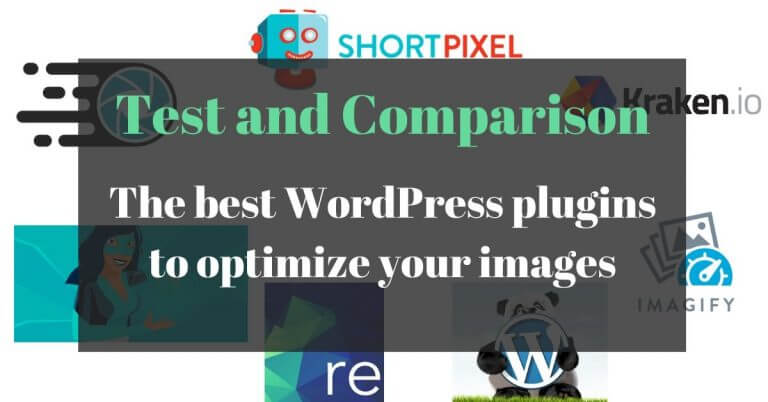
One of the key points to improve the loading speed and the Core Web Vitals of a WP site is the image optimization. Indeed, most of the data downloaded by the browsers of Internet users are actually images. It is therefore very important to optimize this type of file as much as possible. I have already explained in details the two main things to optimize the images of a WordPress site which are:
- Compress images to reduce their weight
- To have responsive images depending on the type of screen and its size
In this article, we will focus mainly on the 1st point (by the way, I recommend that you read this article first before continuing here) and on all the WordPress plugins that allow you to compress images… and thus reduce their weight. I had already presented you quickly 2 plugins for image optimization but today we will go much deeper and compare in details the best WP image compressor plugins. Let’s go!
Compressing your images: some important information
If you have already done some research on this matter, you may know that you can compress your images without loss of quality (“lossless”) or with loss of quality (“lossy”). If you only compress your images without loss of quality, the weight gain will be small and so will the performance improvement of your site. That’s why the standard in 2020 is to optimize your images with loss of quality (lossy) … Moreover if you test your site with a tool like GT Metrix or Google page speed, you will get warning messages if your images are not compressed with loss of quality.
So the idea is to find the right balance between the visual quality of your images and their weight (if you are a photographer, you may be more exigent about the quality). To compress your images, the WP image optimization plugins use different algorithms to optimize the quality of the images while reducing their weight as much as possible. In general, these plugins allow you to choose different levels of compression ranging from the best visual quality of the images (but with a heavier weight) to lower quality but much lighter images.
The idea of this article is therefore to compare the weight and visual quality of a few images after they have been compressed with different WordPress plugins (and different levels of compression). Of course, we will also compare the price of these plugins (because no, compressing your images properly is not free) as well as their different functionalities… The goal is obviously to find the best WordPress plugins for image optimization.
Comparison of the best image optimization plugins for WordPress
Let’s get down to business! Here are the different image optimization plugins that we will compare:
Note: It’s not easy to compare prices because some plugins charge per optimized image and others charge by weight of optimized images. Moreover, each time you upload an image to your media library, WP will create between 6 and 15 images of different sizes (maybe more) depending on your wp theme and plugins.
| Plugins | nbr of WP install | Free trial | Price |
|---|---|---|---|
| EWWW image optimizer | 800’000 + | 300 free credits by subscribing here (no credit card needed) | 0.002$ / image |
| Shortpixel | 200’000 + | 100 free credits per months (no credit card needed) | 0.001$ / image (cheaper the more images you buy) |
| Imagify | 300’000 + | 25 Mb of images per month (no credit card needed) | 10$ for 1Gb of images (cheaper the mor Gb you buy) |
| Resmushit image optimizer | 100’000 + | free | free |
| WP Smush | 1 million + | 7 days of free trial (credit card needed) | 7$ per months without limitations |
| Tiny compress images | 200’000 + | 500 free credits per months (no credit card needed) | 0.009$ per image after the first 500 (0.002$ per image after 10’000) |
| Kraken | 40’000 + | 100 Mb of free images (no credit card needed) | 5$ per months for 500Mb (cheaper the mor Gb you buy) |
All these plugins can be tried for free with a more or less generous quotas. The only plugin that will ask you for your credit card for a 7-day trial period is WP Smush (otherwise you won’t have access to lossy compression which is the only interesting type of compression).
Concerning the price, I have a strong preference for pricing by image rather than by weight. The idea of an image optimization plugin is to allow you to put your images in your media library directly after editing them (or from your camera) and without having to think about compression. For example, I often upload images that are between 5 and 10Mb and that come directly from my photo editing software. With a pricing by image size, I should first be careful not to export images that are too heavy to not blow my WP image optimization quota.
Comparison of the images visual quality and weight after compression with the different WP compressor plugins
As I said before, the idea is to have the best possible image quality/weight ratio after compression. So that we can make a visual comparison, I chose 3 different images (2 images in jpg format and one image in png format) that are 1600 pxs wide and that have already been optimized without loss of quality (this means that they no longer contain metadata but their pixels have not been modified).
Note: An important reminder depending on whether you are reading this article on mobile, tablet or desktop. Thanks to the srcset and sizes attributes, your browser will not display the same image depending on the type and size of your screen. So, if you read this article on a desktop, you will see either the 1600 pxs or 1024 pxs wide image depending on your browser. If you’re on a tablet or mobile device, you’re more likely to see either the 1024 pxs or 768 pxs wide image (maybe even the 300pxs wide). That’s why in the rest of the article, I will compare the optimizations for different image sizes.
Here are the 3 original images without loss of quality:
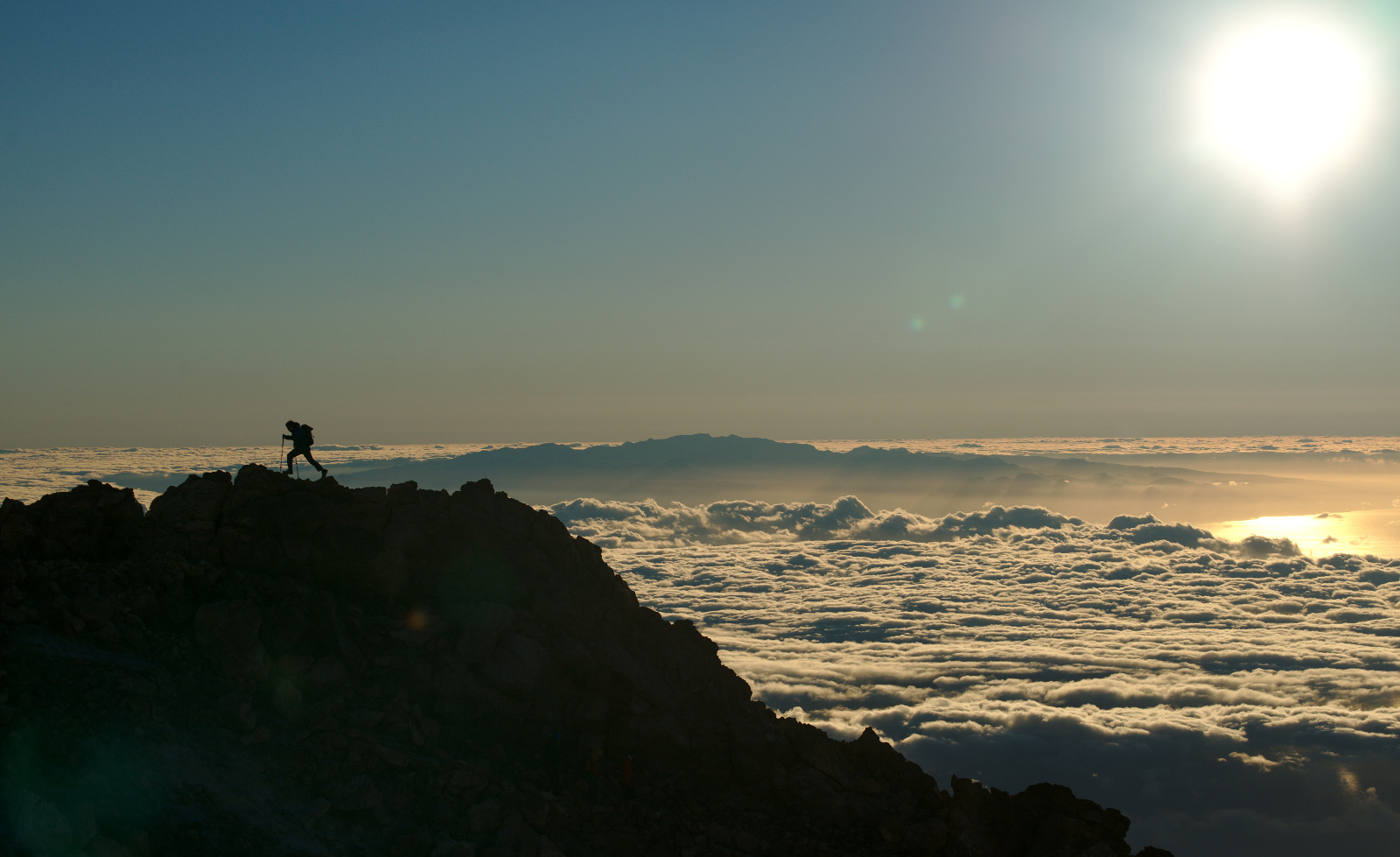


So when I put these images in my media library without an optimization plugin, here are some of the different image sizes that are created with their weights. We will use these different sizes to compare the compression level of the plugins.
| Image | width of the image in pxs | weight of the image in Kb |
|---|---|---|
| Image 1 jpg | original | 435.3 Kb |
| 1536 pxs | 117.3 Kb | |
| 1024 pxs | 59.9 Kb | |
| 768 pxs | 36.8 Kb | |
| 300 pxs | 7.9 Kb | |
| Image 2 jpg | original | 744.5 Kb |
| 1536 pxs | 212.7 Kb | |
| 1024 pxs | 104.5 Kb | |
| 768 pxs | 63 Kb | |
| 300 pxs | 13.2 Kb | |
| Image png | original | 1.9 Mb |
| 1536 pxs | 1.9 Mb | |
| 1024 pxs | 929.1 Kb | |
| 768 pxs | 535.1 Kb | |
| 300 pxs | 87.4 Kb |
Comparison of image 1 in JPG format with different plugins and compression types
For the 1st image, here are the results obtained after optimization with the different WordPress compressor plugins.
| Plugin compression type | image width in pxs | image weight in Kb | compression in % |
|---|---|---|---|
| EWWW (Pixel Perfect plus) | original | 429.8 | 1.26 |
| 1536 | 106.9 | 8.87 | |
| 1024 | 55.2 | 7.85 | |
| 768 | 33.8 | 8.15 | |
| 300 | 7.5 | 5.06 | |
| EWWW (Premium) | original | 148.5 | 65.89 |
| 1536 | 90.6 | 22.76 | |
| 1024 | 46.5 | 22.37 | |
| 768 | 28.9 | 21.47 | |
| 300 | 6.4 | 18.99 | |
| EWWW (Premium plus) | original | 150.1 | 65.52 |
| 1536 | 93.1 | 20.63 | |
| 1024 | 52.9 | 11.69 | |
| 768 | 30.4 | 17.39 | |
| 300 | 7.5 | 5.063 | |
| Shortpixel (Glossy) | original | 158.2 | 63.66 |
| 1536 | 90.4 | 22.93 | |
| 1024 | 59.9 | 0 | |
| 768 | 33.8 | 8.15 | |
| 300 | 7.9 | 0 | |
| Shortpixel (Lossy) | original | 54.6 | 87.46 |
| 1536 | 48.7 | 58.48 | |
| 1024 | 33.6 | 43.90 | |
| 768 | 21 | 42.93 | |
| 300 | 4.9 | 37.97 | |
| Imagify (Aggressive) | original | 167.6 | 61.5 |
| 1536 | 63.6 | 45.78 | |
| 1024 | 34.5 | 42.40 | |
| 768 | 21.6 | 41.30 | |
| 300 | 5.5 | 30.38 | |
| Imagify (Ultra) | original | 58.4 | 86.58 |
| 1536 | 35.2 | 69.99 | |
| 1024 | 21.8 | 63.61 | |
| 768 | 17.7 | 51.90 | |
| 300 | 4.6 | 41.77 | |
| Resmushit (Regular = 92) | original | 251.8 | 42.15 |
| 1536 | 109.5 | 6.65 | |
| 1024 | 56.3 | 6.01 | |
| 768 | 34.8 | 5.43 | |
| 300 | 7.5 | 5.06 | |
| Resmushit (80) | original | 121.1 | 72.18 |
| 1536 | 107.4 | 8.44 | |
| 1024 | 55.2 | 7.85 | |
| 768 | 34.1 | 7.34 | |
| 300 | 7.3 | 7.59 | |
| Resmushit (70) | original | 90.8 | 79.14 |
| 1536 | 93.1 | 20.63 | |
| 1024 | 47.5 | 20.70 | |
| 768 | 29.6 | 19.57 | |
| 300 | 6.4 | 18.99 | |
| WP Smush (Super smush) | original | 100.3 | 76.96 |
| 1536 | 95.2 | 18.84 | |
| 1024 | 48.9 | 18.36 | |
| 768 | 30.4 | 17.39 | |
| 300 | 6.7 | 15.19 | |
| Tiny compress (default) | original | 150.1 | 65.52 |
| 1536 | 101.1 | 13.81 | |
| 1024 | 58.2 | 2.84 | |
| 768 | 32.3 | 12.23 | |
| 300 | 8.7 | -10.13 | |
| Kraken (Intelligent lossy) | original | 139.9 | 67.86 |
| 1536 | 105 | 10.49 | |
| 1024 | 54.2 | 9.52 | |
| 768 | 33.2 | 9.78 | |
| 300 | 6.9 | 12.66 |
In order to be able to compare visually, here are all the images compressed in a gallery:
Comparison of image 2 in JPG format with different plugins and compression types
For the 2nd image, here are the results obtained after optimization with the different WordPress compressor plugins.
| Plugin and compression type | image width in pxs | image weight in Kb | compression in % |
|---|---|---|---|
| EWWW (Pixel Perfect plus) | original | 739.4 | 0.69 |
| 1536 | 200.8 | 5.6 | |
| 1024 | 98.7 | 5.55 | |
| 768 | 59.7 | 5.24 | |
| 300 | 12.4 | 6.06 | |
| EWWW (Premium) | original | 305.2 | 59 |
| 1536 | 172.6 | 18.85 | |
| 1024 | 84.9 | 18.76 | |
| 768 | 51.2 | 18.73 | |
| 300 | 10.7 | 18.94 | |
| EWWW (Premium plus) | original | 220.9 | 70.33 |
| 1536 | 143.8 | 32.4 | |
| 1024 | 88.4 | 15.40 | |
| 768 | 50.7 | 19.52 | |
| 300 | 12.4 | 6.06 | |
| Shortpixel (Glossy) | original | 249.2 | 66.53 |
| 1536 | 172.1 | 19.09 | |
| 1024 | 104.5 | 0 | |
| 768 | 59.7 | 5.24 | |
| 300 | 13.2 | 0 | |
| Shortpixel (Lossy) | original | 92.3 | 87.60 |
| 1536 | 73.1 | 65.63 | |
| 1024 | 67.4 | 35.50 | |
| 768 | 41.1 | 34.76 | |
| 300 | 9.7 | 26.52 | |
| Imagify (Aggressive) | original | 391.7 | 47.39 |
| 1536 | 157.3 | 26.05 | |
| 1024 | 78.4 | 24.98 | |
| 768 | 47.6 | 24.44 | |
| 300 | 10.7 | 18.94 | |
| Imagify (Ultra) | original | 323.4 | 56.56 |
| 1536 | 212.7 | 0 | |
| 1024 | 61.6 | 41.05 | |
| 768 | 63 | 0 | |
| 300 | 9.2 | 30.30 | |
| Resmushit (Regular = 92) | original | 428.3 | 42.47 |
| 1536 | 202.5 | 4.8 | |
| 1024 | 99.5 | 4.78 | |
| 768 | 60.2 | 4.44 | |
| 300 | 12.6 | 4.55 | |
| Resmushit (80) | original | 237.7 | 68.07 |
| 1536 | 198 | 6.91 | |
| 1024 | 97.5 | 6.7 | |
| 768 | 58.9 | 6.51 | |
| 300 | 12.3 | 6.82 | |
| Resmushit (70) | original | 182.1 | 75.54 |
| 1536 | 171.4 | 19.41 | |
| 1024 | 84.4 | 19.23 | |
| 768 | 51 | 19.05 | |
| 300 | 10.7 | 18.94 | |
| WP Smush (Super smush) | original | 206.7 | 72.24 |
| 1536 | 180.3 | 15.23 | |
| 1024 | 88.7 | 15.12 | |
| 768 | 53.6 | 14.92 | |
| 300 | 11.2 | 15.15 | |
| Tiny compress (default) | original | 220.9 | 70.33 |
| 1536 | 149.6 | 29.67 | |
| 1024 | 95.8 | 8.33 | |
| 768 | 54.3 | 13.81 | |
| 300 | 14.6 | -10.61 | |
| Kraken (Intelligent lossy) | original | 490.5 | 34.12 |
| 1536 | 178.8 | 15.94 | |
| 1024 | 89.9 | 13.97 | |
| 768 | 56.1 | 10.95 | |
| 300 | 11.9 | 9.85 |
And to compare visually, here again are all the compressed images in a gallery:
Comparison of image 3 in PNG format with different plugins and compression types
For the 3rd image, here are the results obtained after optimization with the different WordPress plugins. As it’s a PNG image, I also added in the 1st column if the plugin supports automatic conversion to JPG if the image doesn’t have transparency (in which case PNG is useless, which is the case for this image). For this image, the weight gain is huge if it is automatically converted to JPG:
| Plugin and compression type | image width in pxs | image weight in Kb | compression in % |
|---|---|---|---|
| EWWW (Pixel Perfect plus) Auto conversion to JPG : YES |
original | 111.8 | 94.06 |
| 1536 | 99.4 | 94.85 | |
| 1024 | 52.7 | 94.33 | |
| 768 | 33.9 | 93.66 | |
| 300 | 8.6 | 76.37 | |
| EWWW (Premium) Auto conversion to JPG : YES |
original | 94.4 | 94.99 |
| 1536 | 84.5 | 95.62 | |
| 1024 | 45.2 | 95.13 | |
| 768 | 29.5 | 94.49 | |
| 300 | 7.5 | 79.4 | |
| EWWW (Premium plus) Auto conversion to JPG : YES |
original | 83.2 | 95.58 |
| 1536 | 74.6 | 96.13 | |
| 1024 | 42.8 | 95.39 | |
| 768 | 27 | 94.96 | |
| 300 | 8.6 | 76.37 | |
| Shortpixel (Glossy) Auto conversion to JPG : YES |
original | 121.9 | 93.53 |
| 1536 | 85.6 | 95.56 | |
| 1024 | 55.8 | 93.99 | |
| 768 | 33.7 | 93.70 | |
| 300 | 5.8 | 84.07 | |
| Shortpixel (Lossy) Auto conversion to JPG : YES |
original | 45.5 | 97.58 |
| 1536 | 38.8 | 97.99 | |
| 1024 | 28.7 | 96.91 | |
| 768 | 21.4 | 96 | |
| 300 | 5.8 | 84.071 | |
| Imagify (Aggressive) Auto conversion to JPG : NO |
original | 723.3 | 61.59 |
| 1536 | 1930 | 0 | |
| 1024 | 929 | 0 | |
| 768 | 535 | 0 | |
| 300 | 36.4 | 0 | |
| Imagify (Ultra) Auto conversion to JPG : NO |
original | 426.4 | 77.36 |
| 1536 | 1930 | 0 | |
| 1024 | 929 | 0 | |
| 768 | 535 | 0 | |
| 300 | 36.4 | 0 | |
| Resmushit (Regular = 92) Auto conversion to JPG : NO |
original | 667.8 | 64.54 |
| 1536 | 594.6 | 69.19 | |
| 1024 | 274.7 | 70.43 | |
| 768 | 161.2 | 69.87 | |
| 300 | 29.3 | 19.51 | |
| Resmushit (80) Auto conversion to JPG : NO |
original | 667.8 | 64.54 |
| 1536 | 594.6 | 69.19 | |
| 1024 | 274.7 | 70.43 | |
| 768 | 161.2 | 69.87 | |
| 300 | 29.3 | 19.51 | |
| Resmushit (70) Auto conversion to JPG : NO |
original | 667.8 | 64.54 |
| 1536 | 594.6 | 69.19 | |
| 1024 | 274.7 | 70.43 | |
| 768 | 161.2 | 69.87 | |
| 300 | 29.3 | 19.51 | |
| WP Smush (Super smush) Auto conversion to JPG : NO |
original | 591.6 | 68.58 |
| 1536 | 526.5 | 72.72 | |
| 1024 | 247.5 | 73.36 | |
| 768 | 145.6 | 72.79 | |
| 300 | 27.5 | 24.45 | |
| Tiny compress (default) Auto conversion to JPG : NO |
original | 533.8 | 71.65 |
| 1536 | 468.8 | 75.71 | |
| 1024 | 217 | 76.64 | |
| 768 | 128.8 | 75.93 | |
| 300 | 24.9 | 31.59 | |
| Kraken (Intelligent lossy) Auto conversion to JPG : NO |
original | 536.7 | 71.5 |
| 1536 | 473.7 | 75.46 | |
| 1024 | 220.5 | 76.26 | |
| 768 | 129.9 | 75.72 | |
| 300 | 25.9 | 28.85 |
And to compare visually, here are all the images after optimization in a gallery:
Ranking of the WP plugins according to the weight and visual quality of the images after compression
Based only on the first 2 images (since not all plugins automatically convert png to jpg when necessary), here is a small ranking of the different plugins and compression types according to the % reduction (average size on images 1 and 2) and visual quality. Of course the visual quality ranking is subjective and is only my own opinion.
| Plugins and compression type | Compression ranking | Visual quality ranking |
|---|---|---|
| EWWW (Pixel Perfect plus) | 13 (5.4 %) | 1 |
| EWWW (Premium) | 5 (28.6 %) | 7 |
| EWWW (Premium plus) | 7 (26.4 %) | 5 |
| Shortpixel (Glossy) | 11 (18.6 %) | 3 |
| Shortpixel (Lossy) | 1 (52.1 %) | 13 |
| Imagify (Aggressive) | 3 (36.3 %) | 6 |
| Imagify (Ultra) | 2 (44.2 %) | 12 |
| Resmushit (Regular = 92) | 11 (12.6 %) | 2 |
| Resmushit (80) | 8 (19.8 %) | 10 |
| Resmushit (70) | 4 (31.12%) | 11 |
| WP Smush (Super smush) | 6 (27.9 %) | 9 |
| Tiny compress (default) | 9 (19.6 %) | 8 |
| Kraken (Intelligent lossy) | 10 (19.5 %) | 4 |
Additional features of the WP image compression plugins
For the moment we have only compared the image compression efficiency of these different WP plugins (this is obviously the most important point). But some of these plugins have more features than others (we’ve already noticed this just with the conversion from png to jpg when necessary). Here’s a small list of additional features that might be useful depending on your needs:
- Conversion to WEBP format: WEBP is a new image format for the web that is supposed to produce images at least 20% smaller for the same quality (compared to JPG and PNG). This format is supported by most modern browsers and could become the preferred format for images on the web. I haven’t switched to this format yet but when the time comes, I’ll be able to do it easily with one of these wp plugins.
- Custom folders: In general, all your images are stored in the WordPress uploads folder. But sometimes, some plugins save them elsewhere. In these cases, it may be useful to be able to define some custom folders to optimize their images.
- Responsive images and CDN: As I said at the beginning of the article, the second important point when talking about images for WordPress is to make sure that the right image is used according to the size and type of screen (the viewport). To do this, your theme must correctly implement the srcset and sizes attributes (more details in this article). But as many WP themes don’t do it properly, some of these plugins offer an interesting solution. Your images are optimized and served from different servers and especially delivered at the right size according to the viewport of the user who requests them. These solutions are generally more expensive and would need to be tested separately and compared to other more general CDN offers.
- Exclude some image sizes: Some WP themes and plugins can create up to 15-20 different image sizes… Often, many of these image sizes are created for very specific things that you don’t necessarily use on your site (portfolio, woocommerce products etc…). It can therefore be very useful to disable the creation and/or optimization of certain image sizes to save space on your server and money (since optimizing images properly is not free).
| Plugins | WEBP conversion | Custom folders | Responsive images / CDN | Image sizes |
|---|---|---|---|---|
| EWWW image optimizer | YES | YES | YES | YES (creation and/or optimization) |
| Shortpixel | YES | YES | YES (by installing another plugin) | YES (only optimization) |
| Imagify | YES | YES | YES | YES (only optimization) |
| Resmushit image optimizer | NO | NO | NO | NO |
| WP Smush | YES | YES | YES | NO |
| Tiny compress images | NO | NO | NO | YES (only optimization) |
| Kraken | NO | NO | NO | YES (only optimization) |
Conclusions and best plugins for WordPress image optimization
To conclude, I would say that we must differentiate between two types of users:
- People who want to reduce the weight of the images as much as possible without worrying too much about the visual quality loss.
- People (like me) who want the best weight/image quality ratio
![]() For people in the first category, I would say that nothing beats the Shorpixel plugin and its “lossy” compression. It’s the compression that creates the lightest images (but also those of lower quality in my opinion) and Shorpixel is also the cheapest plugin of all (and also one of the richest in terms of features). Both Imagify plugin‘s compressions are equally interesting, but their pricing by the weight of optimized images seems far less attractive to me than the price per image (unless you reduce your images before optimizing them, but that doesn’t make a lot of sense).
For people in the first category, I would say that nothing beats the Shorpixel plugin and its “lossy” compression. It’s the compression that creates the lightest images (but also those of lower quality in my opinion) and Shorpixel is also the cheapest plugin of all (and also one of the richest in terms of features). Both Imagify plugin‘s compressions are equally interesting, but their pricing by the weight of optimized images seems far less attractive to me than the price per image (unless you reduce your images before optimizing them, but that doesn’t make a lot of sense).
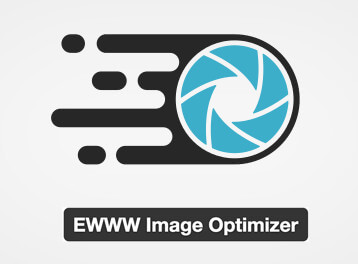 As far as I’m concerned, I belong to the 2nd category of people and I’m looking to have the best weight/image quality ratio. So I directly eliminated the lossy compression of Shorpixel, Imagify ultra and resmushit 80 and 70 for their bad image quality (in my opinion). Next (compared to the % compression) come the Imagify aggressive compression and the Premium and Premium plus compression of EWWW image optimizer. Because from my point of view EWWW pricing is more attractive than Imagify’s and because EWWW is the plugin with the most features by far (not all of them have been listed above), it is the one I chose to use on all my sites. But if Shortpixel were to integrate an intermediate compression between its lossy and glossy algorithms, it might change my mind.
As far as I’m concerned, I belong to the 2nd category of people and I’m looking to have the best weight/image quality ratio. So I directly eliminated the lossy compression of Shorpixel, Imagify ultra and resmushit 80 and 70 for their bad image quality (in my opinion). Next (compared to the % compression) come the Imagify aggressive compression and the Premium and Premium plus compression of EWWW image optimizer. Because from my point of view EWWW pricing is more attractive than Imagify’s and because EWWW is the plugin with the most features by far (not all of them have been listed above), it is the one I chose to use on all my sites. But if Shortpixel were to integrate an intermediate compression between its lossy and glossy algorithms, it might change my mind.
See the EWWW image optimizer plugin
Even if optimizing your WP images is not very expensive (we pay around 2$/month with EWWW for our 2 sites), if you don’t havethe budget for that, then the best free solution is still to use the Resmushit plugin with an image quality between 70 and 80 I would say.
That’s it for this detailed comparison of the best WP image compressor plugins. While doing my own researches, I haven’t found any information on the web comparing precisely these different tools. So I hope my article will be useful and don’t hesitate to ask me your questions in the commentsection below (and to share the article if you found it useful 😉 )
Pin it on Pinterest
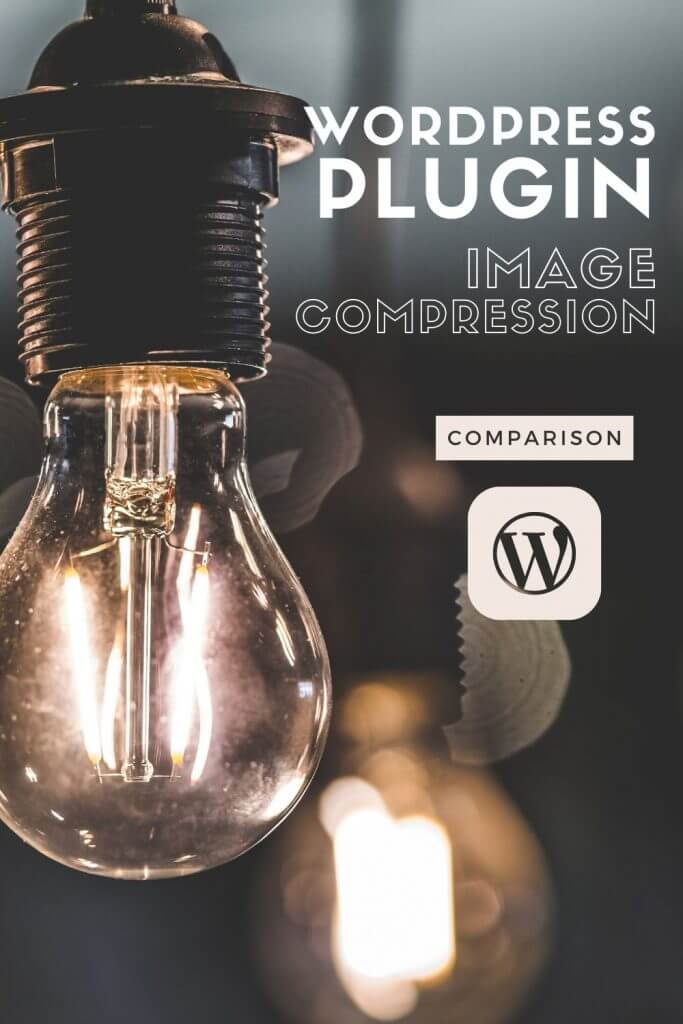
Note: This article contains affiliate links for the image optimization plugins I recommend. If you subscribe to one of these plugins, we will get a small commission and you won’t pay a penny more. This way, you will support us in the creation of such free and independent articles.
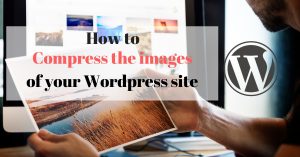
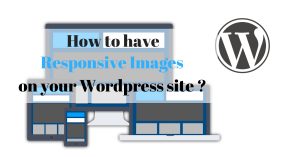
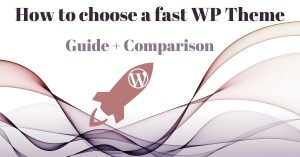
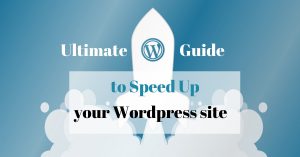

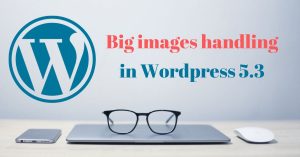
Hi Benoit
Thank you for you detailed comparison!
1) EWWW has a free version forever on WP directory, why you didn’t mention it? Not worth it?
2) what about WP Compress and Gumlet image optimizer?
3) If we compress images with tools online like tinyjpg.com or kraken.io then we don’t need to install these plugins?
4) Your sentence “we pay around 2$/month with EWWW for our 2 sites” how can you do this? The EWWW for 2-10 sites is $15/month or $150/year, which option or did you take?
Hi Michael,
1) If you use the free version you don’t have access to the premium compressions which are the one you should use to get the best size/quality ratio
2) Haven’t tested those… hard to try all the plugins out there 😉
3) you still need to have those plugins because when you upload a compressed image in your media library, WP will generate several copies of this image in different sizes. All those copy won’t be optimized if you don’t use a plugin
4) You don’t have to use the monthly subscription plan… you can also subscribe to the image compression plugin (without the image CDN and all the other stuff) only and only pay for what you compress.
thank you for this article. I rrrreally needed it.
I belong in the first camp. Speed kills. peace.
Such a very good and time consumming work. Thank you so much bro. I helped me a lot. Good job 👍